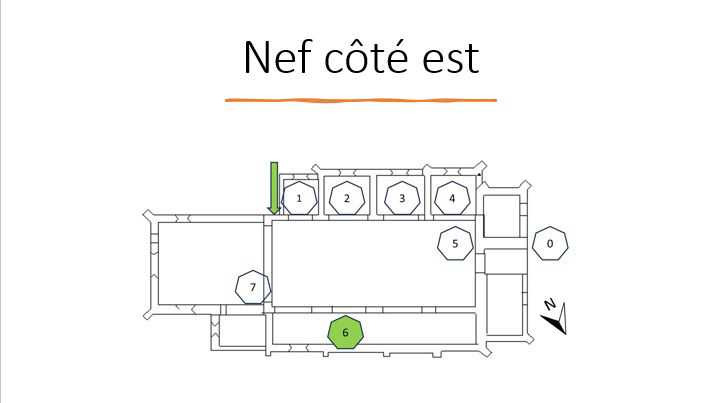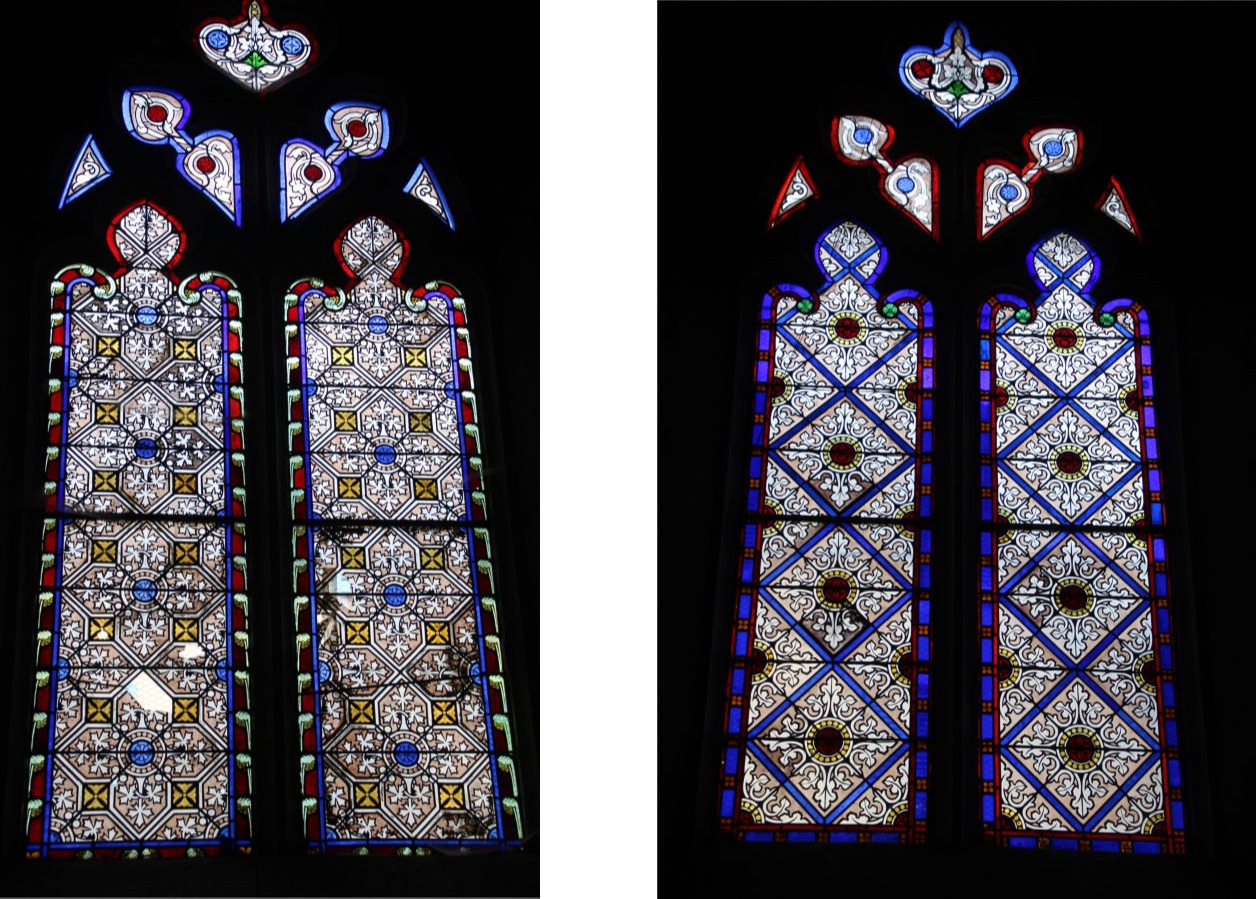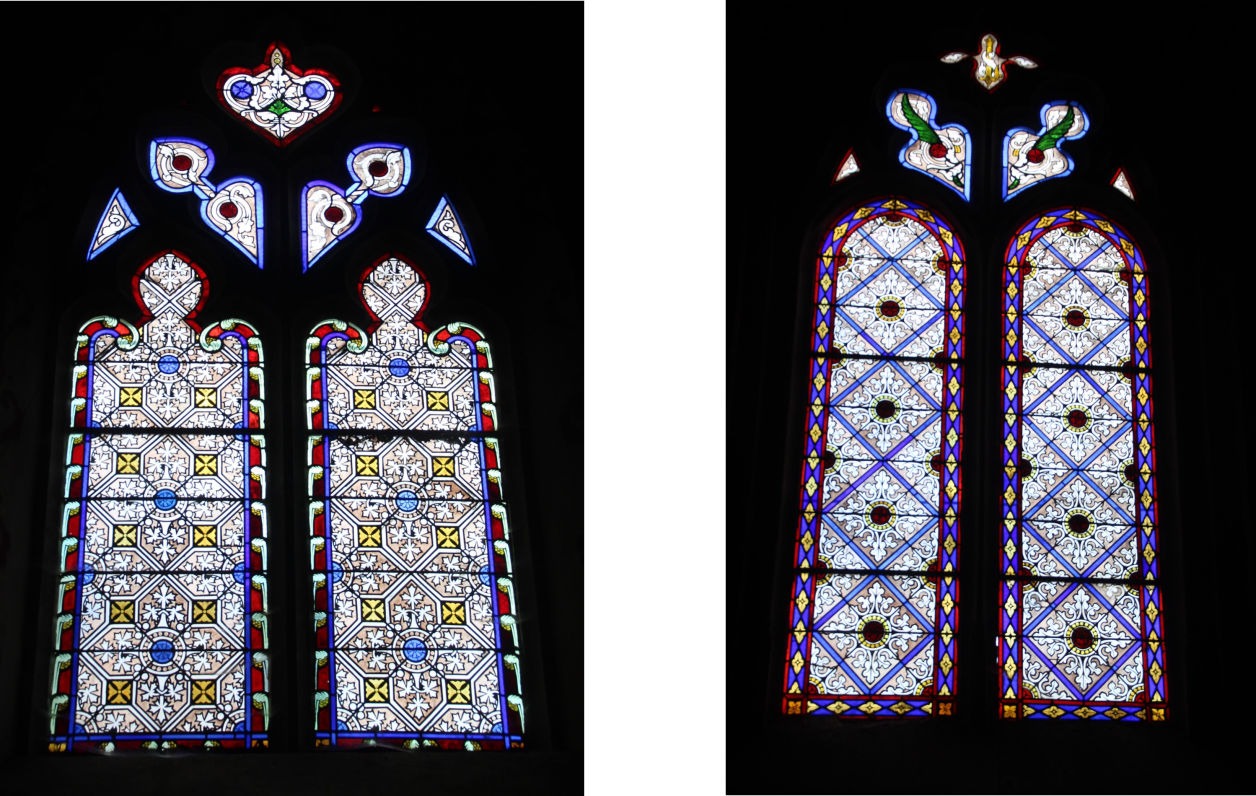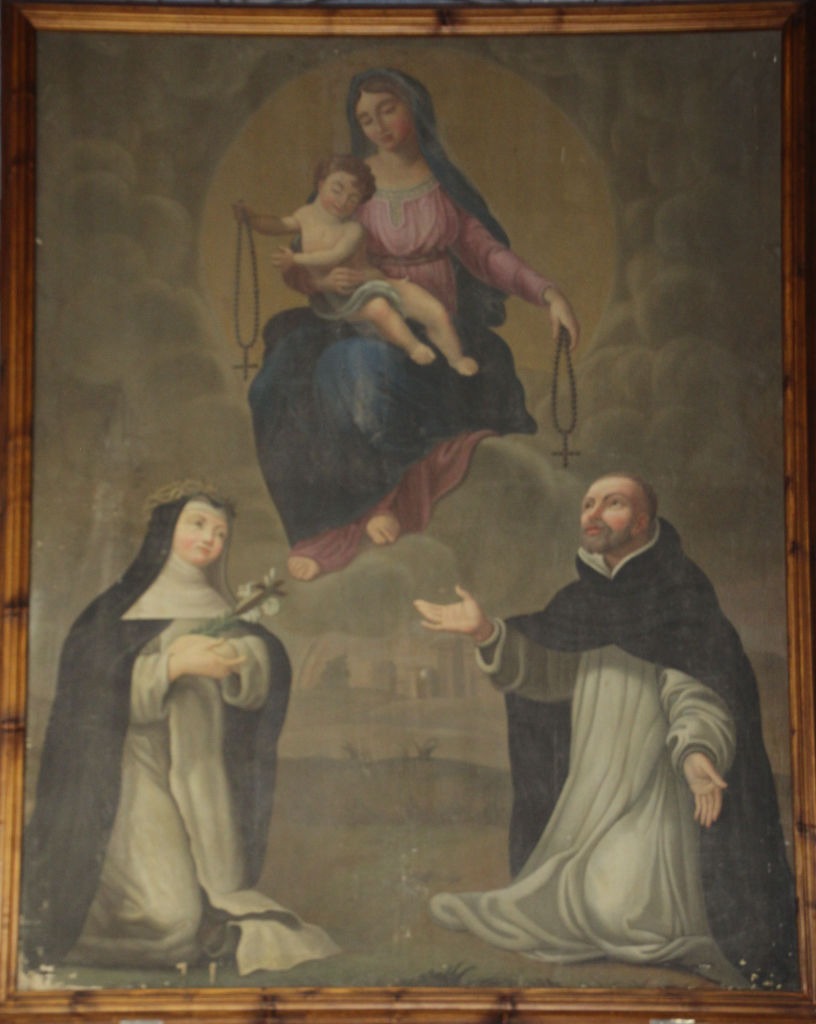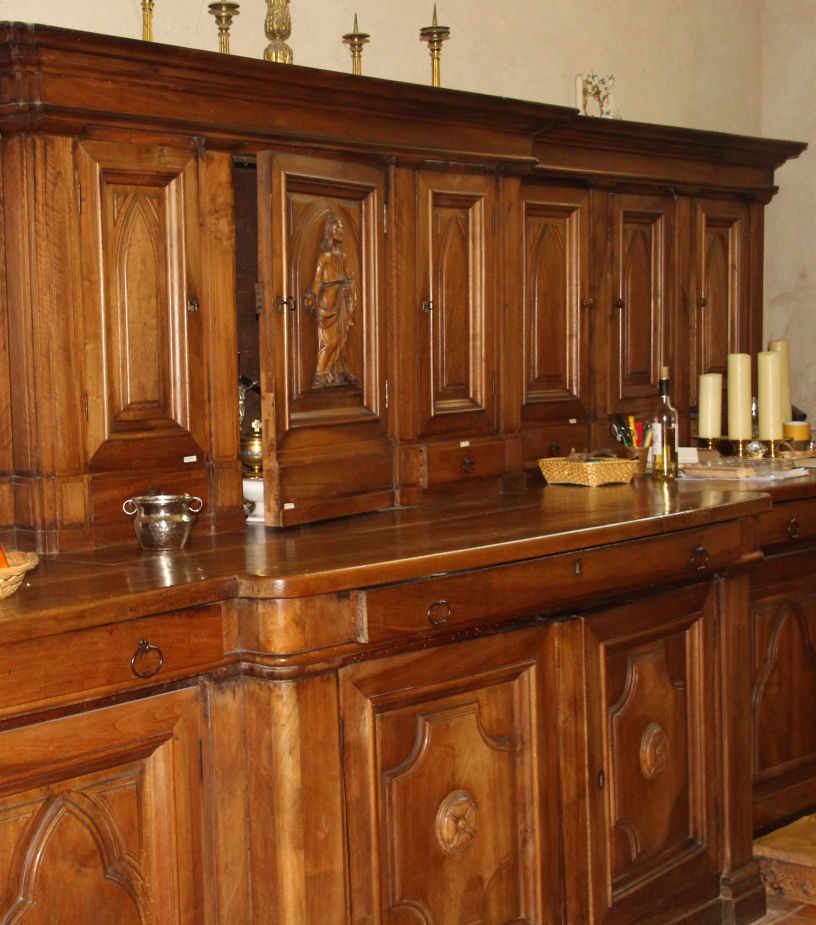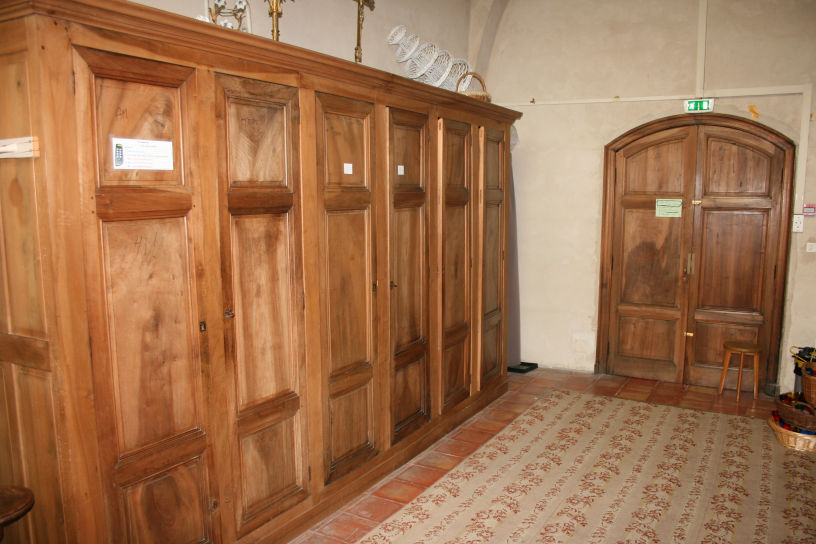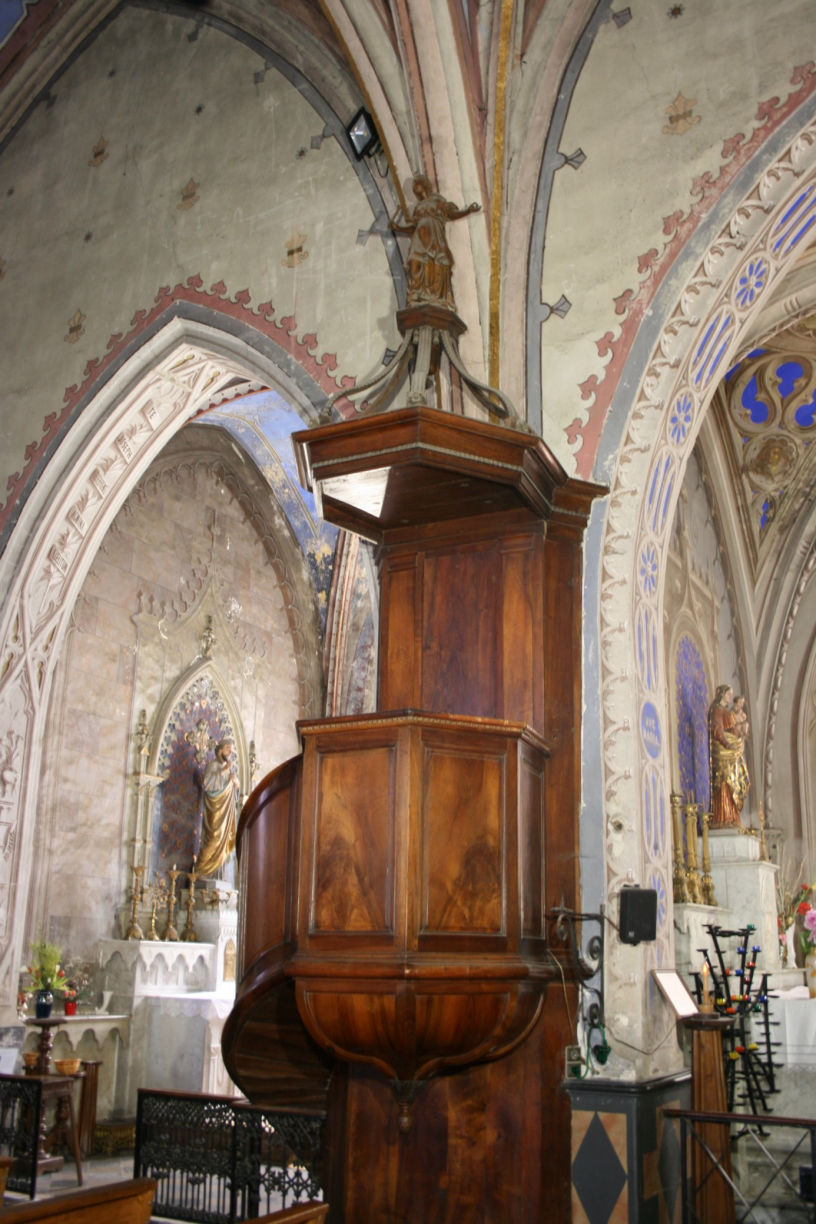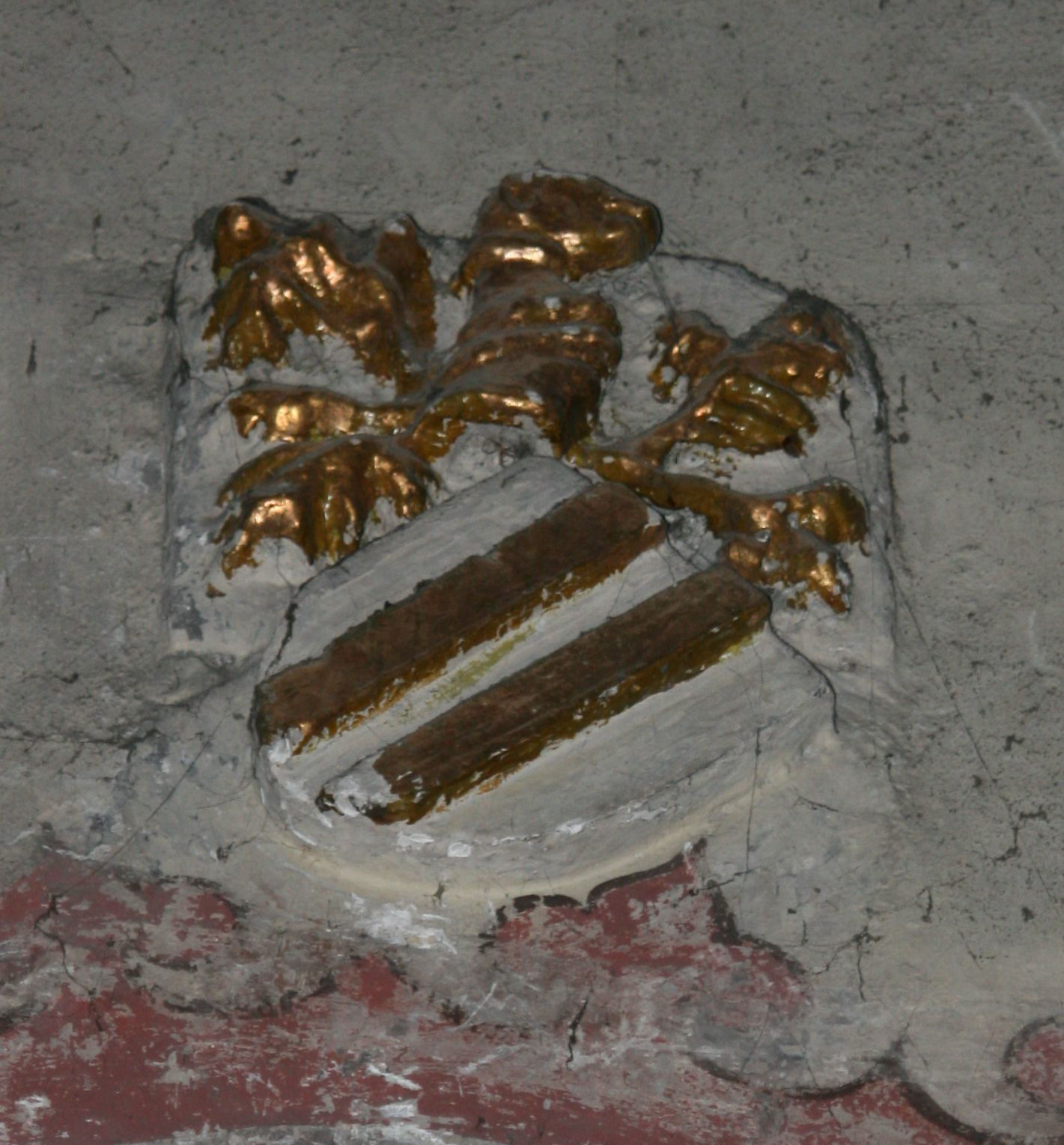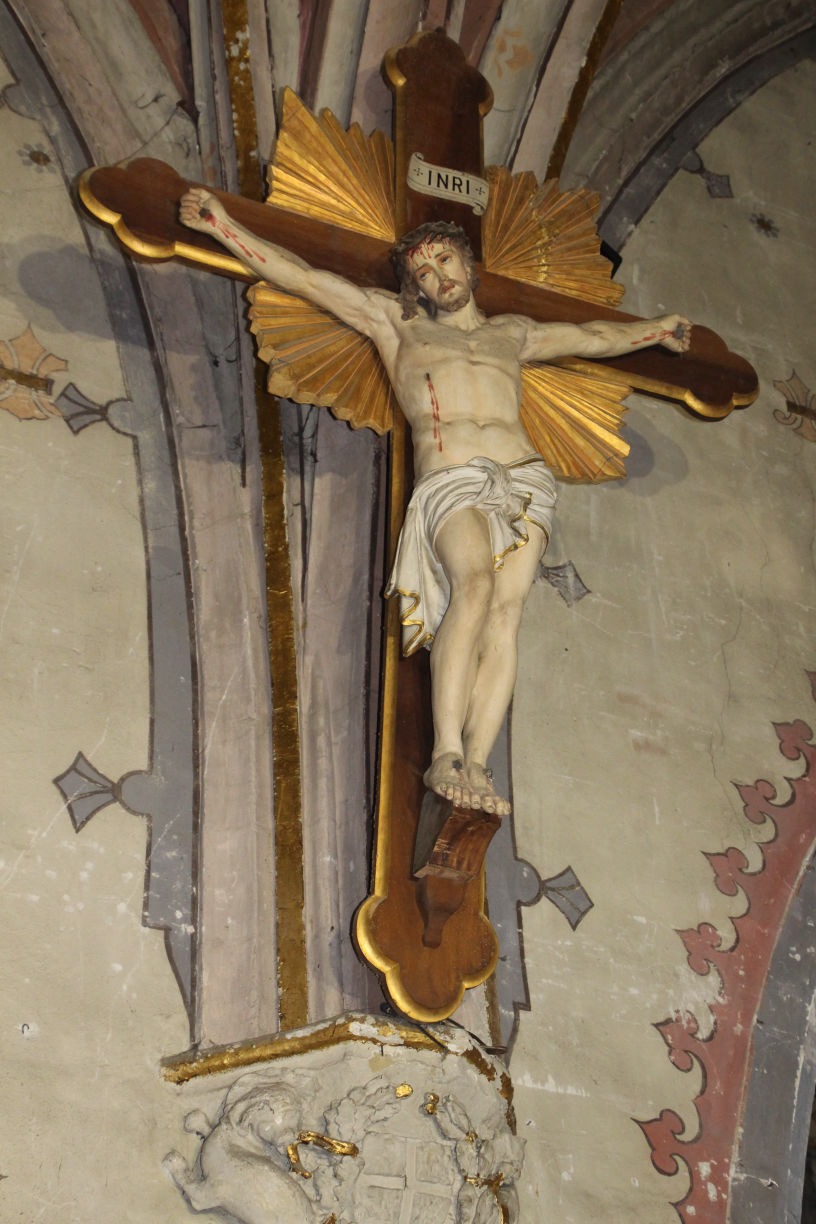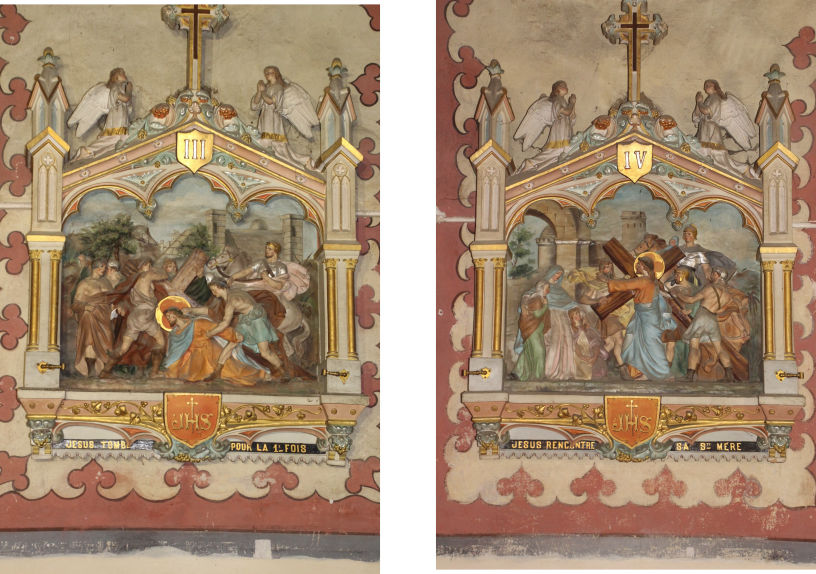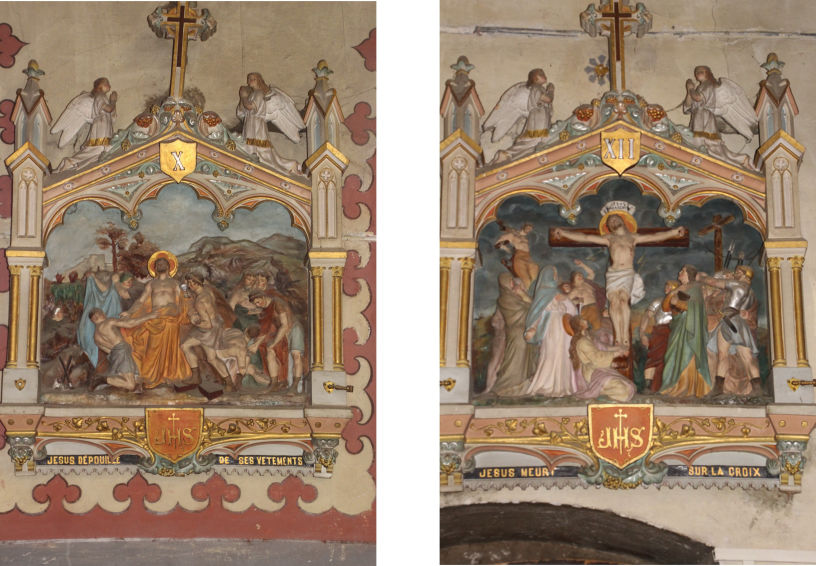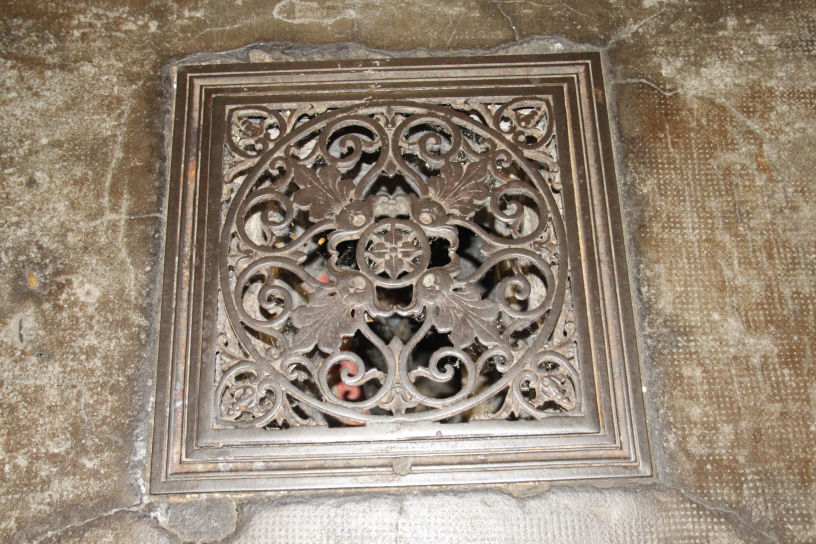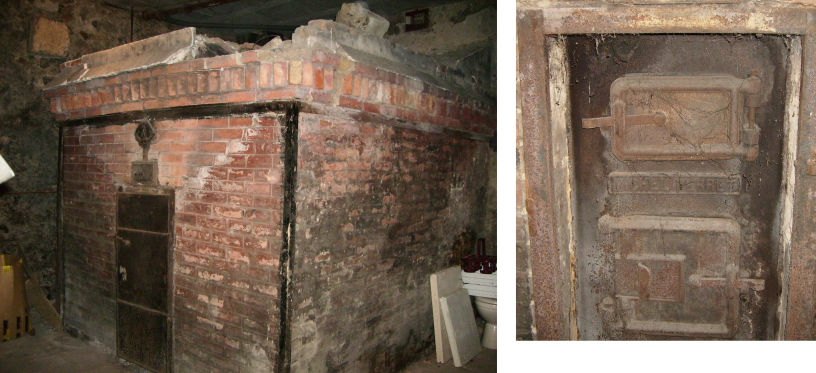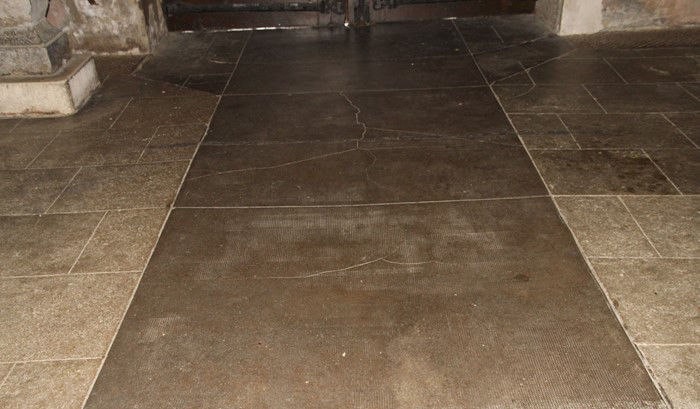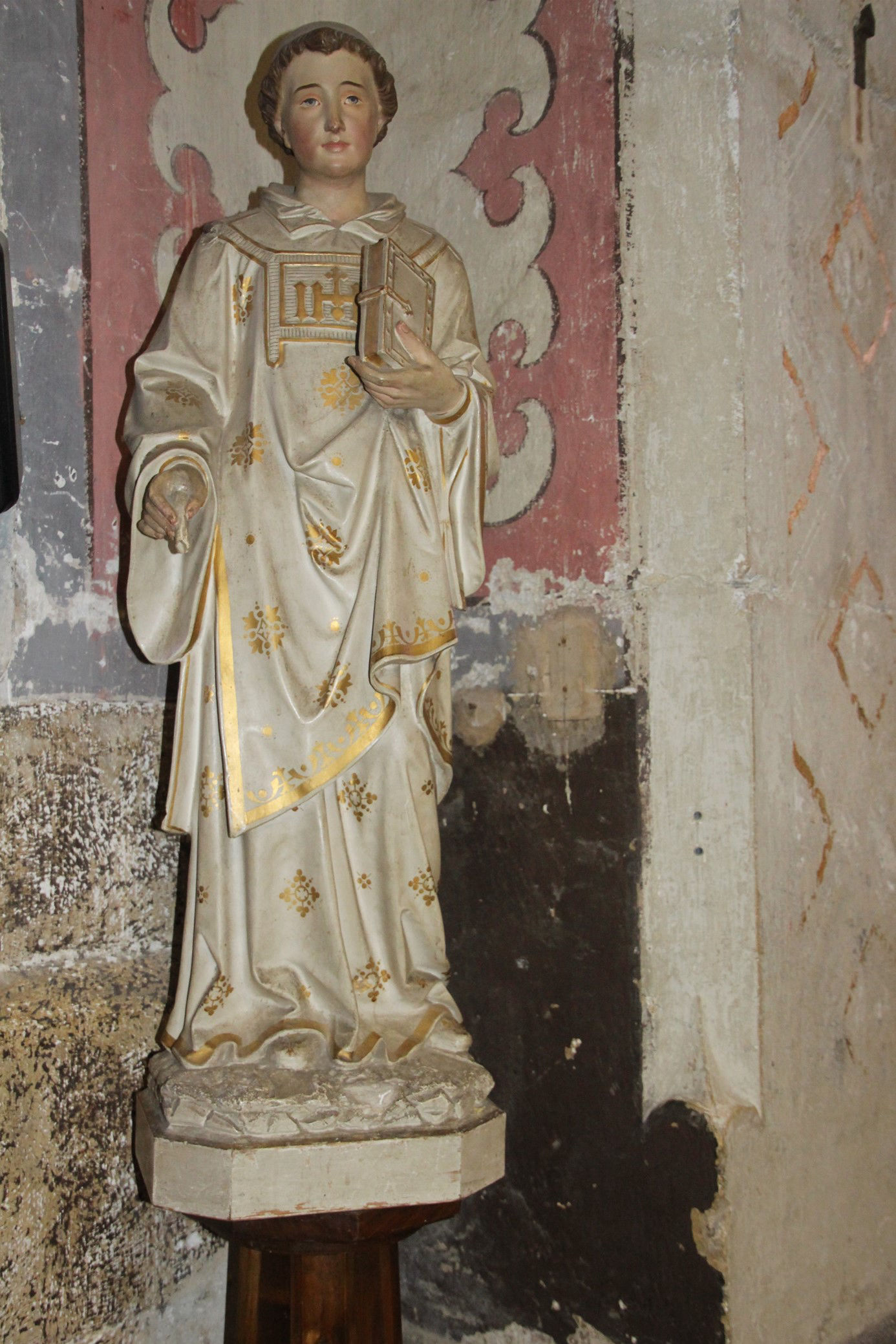Opposite the pulpit is a monumental crucifix, dating from the 19th century. Another crucifix existed in the church above the stalls. It was destroyed during the Revolution. (cf. 9)
All around the nave, we find other stages of the Way of the Cross illustrating the Passion of Christ. Above the pediment of each sign of the Way of the Cross are two angels. This same scene is found on all the panels. On the sides there were supports bearing the candles illuminating each scene. (cf. 10)
In the central alley, several grids allowed the heating of the church, by circulation of hot air.
The hot air was produced by a boiler installed in the cellars of the adjoining parish house. The heating was installed in 1882, thanks to Michel Perret, inventor of this boiler, patented by him. To help finance it, he abandoned the royalty for this installation, made by Bouchailler and Viallet, Grenoble industrialists. The warm air was brought by ducts dug into the ground. As a result, the paving of the church had to be taken up and made with a darker concrete, emphasizing the central aisle of the church. (cf. 12-14)
Let us now turn to the choir. On the left is the statue of Saint Laurent, patron saint of the church. Martyred by the Romans in the 3rd century, it was burned in the year 258. It is said that during his ordeal, he reportedly told his executioners, “Can you turn me over, I am quite cooked on this side”. But this story is probably apocryphal.
(cf. 15 below)
